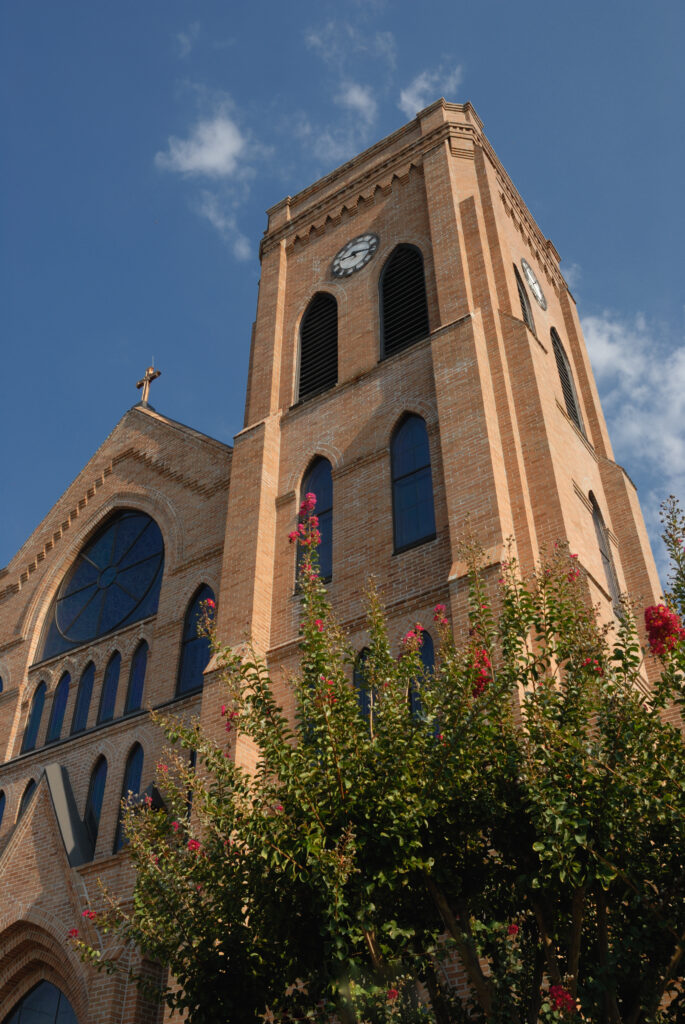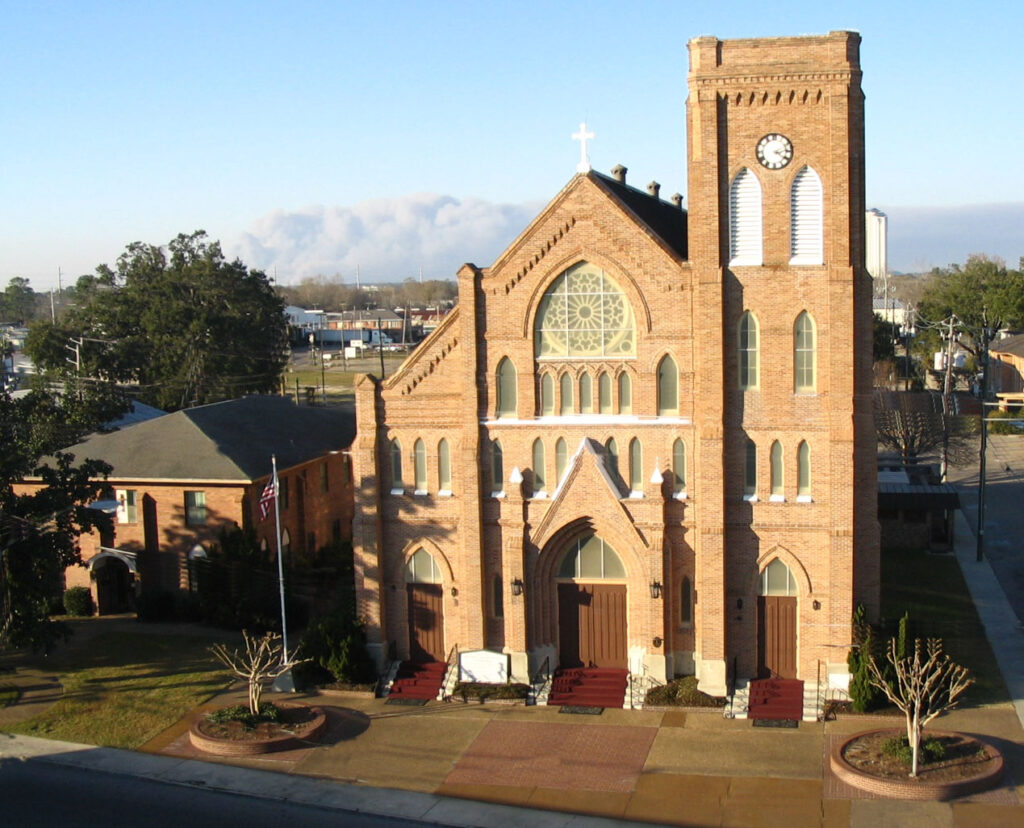
Catholic tradition in the historic multi-ethnic City of Biloxi finds its strongest roots in the development and growth of Nativity Church.
Prior to early 1900, Nativity was the parent church, continuing missions dating back to the French Colonial era. It served the entire area, first as a modest structure in 1843, which was severely damaged by an 1869 hurricane; then as a larger frame church from 1870 until obliterated by fire in 1900. This was the year when half of downtown Biloxi fell prey to the fiery conflagration.
The tragedy was perhaps unparalled in the history of the diocese; one from which Nativity rose to become larger and stronger.
Under the leadership of Pastor Alphonse Ketels, the congregation initiated a rebuilding program.
In February, 1901, Father Ketels traveled to his native Europe to seek further assistance in the rebuilding of his beloved parish.
The present church was built in 1902 at a cost of $16,000. An excellent example of late Gothic Revival, it was designed by Theodore Brune, a New Orleans architect who was responsible for some of the finest buildings constructed in Biloxi at the turn of the century. The building was constructed by J.F. Barnes and Company.

On September 14, 1902, the church was dedicated to the Blessed Virgin Mary. The Church has been in the 1906, 1969, and 1985 hurricanes. Other improvements necessarily followed and are continual, revealing impressions of te strong faith and character of Nativity’s continuous generations of benevolent parishioners and friends.
In 1929, the entire interior of the church was repainted using a donation from Alfred E. Smith, Governor of New York, and the first Catholic candidate for the office of President of the United States, who visited Nativity earlier that year.
During 1942, personnel assigned to Keesler Field laid a new floor in the church overnight.
Three pearl beige Italian marble altars were donated by parishioners and installed in 1943.
Nativity has 24 major stained-glass windows and 30 other smaller pieces of painted glass. The five windows above the main altar were created by a father-son team named Reis in Munich, Germany and were installed in 1906.